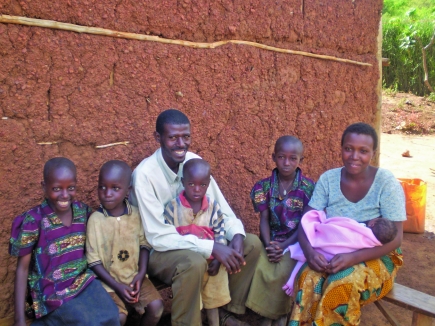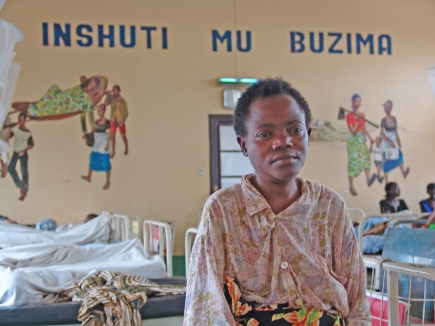Abstract
Mandatory participation in mutual health insurance schemes and public subsidies for the poor have led to considerable improvement in public health and health care in Rwanda, but even at US$ 2 a year, the price for some members of the population remains prohibitively high. Aimable Twahirwa reports from Kigali.
Rwanda’s Ministry of Health plans, to boost community participation in the financing of health-care services in the 1980s and 1990s, were hampered in the immediate aftermath of the war and genocide of 1994. But since those dark days, Rwandan authorities have engaged in an effort to strengthen communities’ role in managing and co-financing health-care provision. One of the ways it has done this is through mutual health insurance schemes, known in Rwanda as mutuelles de santé or mutuelles.
Mutuelles were reinitiated as pilot projects in Rwanda in 1999 and uptake accelerated sharply in 2004–2005 with the adoption of a national policy on mutuelles and a roll-out of the schemes with the financial and technical support of development partners. As of April this year, every Rwandan is obliged by law to have some form of health insurance.
There are currently several health insurance programmes in Rwanda targeting specific groups of the population. However, the biggest in terms of membership is the mutuelles scheme, participation in which is organized on a per household basis, with an annual payment of 1000 Rwandan francs (US$ 2) per family member.
For WHO’s Laurent Musango, former director of the School of Public Health at the National University of Rwanda, the growth of the mutual health insurance system has been a great success from the point of view of the affordability of the programme, and the fact that all comers are covered: “Rwanda is the only country in sub-Saharan Africa in which 85% of the population participates in mutual insurance programmes for their health coverage,” he says, adding that coverage is afforded to, “the rich as well as the poor, the young as well the old, the urban as well as the rural population”.
Musango argues that mutualization has also led to a reduction in health-care costs, and the increased use of health-care services. Taken together with other reforms such as the decentralization of health-care services, performance-based financing, quality insurance and improvements in quality control through supervision, Musango believes mutualization has made a significant contribution to the well-being of the population.
But there have been suggestions that people are being pressured into participating in a scheme they can ill-afford. “In the poorest regions of Rwanda there are people who are finding it difficult to pay for the mutuelle, but the government is doing a lot to help,” says Didi Bertrand Farmer, director of community health and social development with Partners in Health, a nongovernmental organization that is working in eastern Rwanda.
Musango notes that participation in mutuelles has increased since 1999 because people can see the advantages, a view supported by Cyriaque Muhayimana, a farmer with five children, living in the village of Rulindo 30 kilometres from Kigali: “At first most of the people in my village said that this system wouldn’t work and that the cost of participating was more than they could afford,” he says, adding that, “today nearly everyone in the village, most of them farmers, understands the usefulness of the mutuelles system.”
Adélio Fernandes Antunes, health systems management analyst at the Department of Health Systems Financing at the World Health Organization (WHO), while keen to emphasize the advantages of mutuelles is also aware of the challenges they face: “The current mutuelles still have to improve their financial sustainability,” he says, noting also that while the current mutuelles scheme enables most families to join on the basis of solidarity, these schemes could be fairer as payments are not yet based on capacity-to-pay. In other words, the rich and the poor all pay the same contribution. “Even in a country like Rwanda one may want to search for opportunities to increase the contribution of better-off households and to support the access of the poor with those monies,” Antunes says
The mutuelles system is partly financed by external aid, from partners such as the Global Fund to fight AIDS, Tuberculosis and Malaria, which covers insurance premiums for about 1.5 million vulnerable Rwandans. But Rwanda’s mutuelles system doesn’t cover all health costs confronting poor people in this country of some nine million people.
“Mutuelles provide, in theory, access to all levels of the system. They don’t remove all financial barriers to access services but they do reduce them, even at hospitals when people have been referred, using public subsidies,” says Antunes. Beyond concerns about financial sustainability, he says the mutuelles’ success will also hinge on having strong insurance institutions that build on each other.
That said, Rwanda is in many ways an inspiration to other countries in its commitment to universal health care. Says Antunes: “Rwanda remains one of the poorest and most vulnerable countries in the African continent and in the world but it has realized that by basing its health financing systems on solidarity and fairness it can move towards the universal coverage needed for its society to grow socially and economically.” ■
Families in Rwanda, such as this one, are benefiting from mutual health insurance schemes.
Courtesy of Partners in Health
A patient at Rwinkwavu Hospital, the main referral site of nongovernmental organization Partners in Health in Rwanda. Inshuti Mu Buzima painted on the wall means: “Partners in Health” in the local language Kinyarwanda.
Laurie Wen/PIH Rwanda




